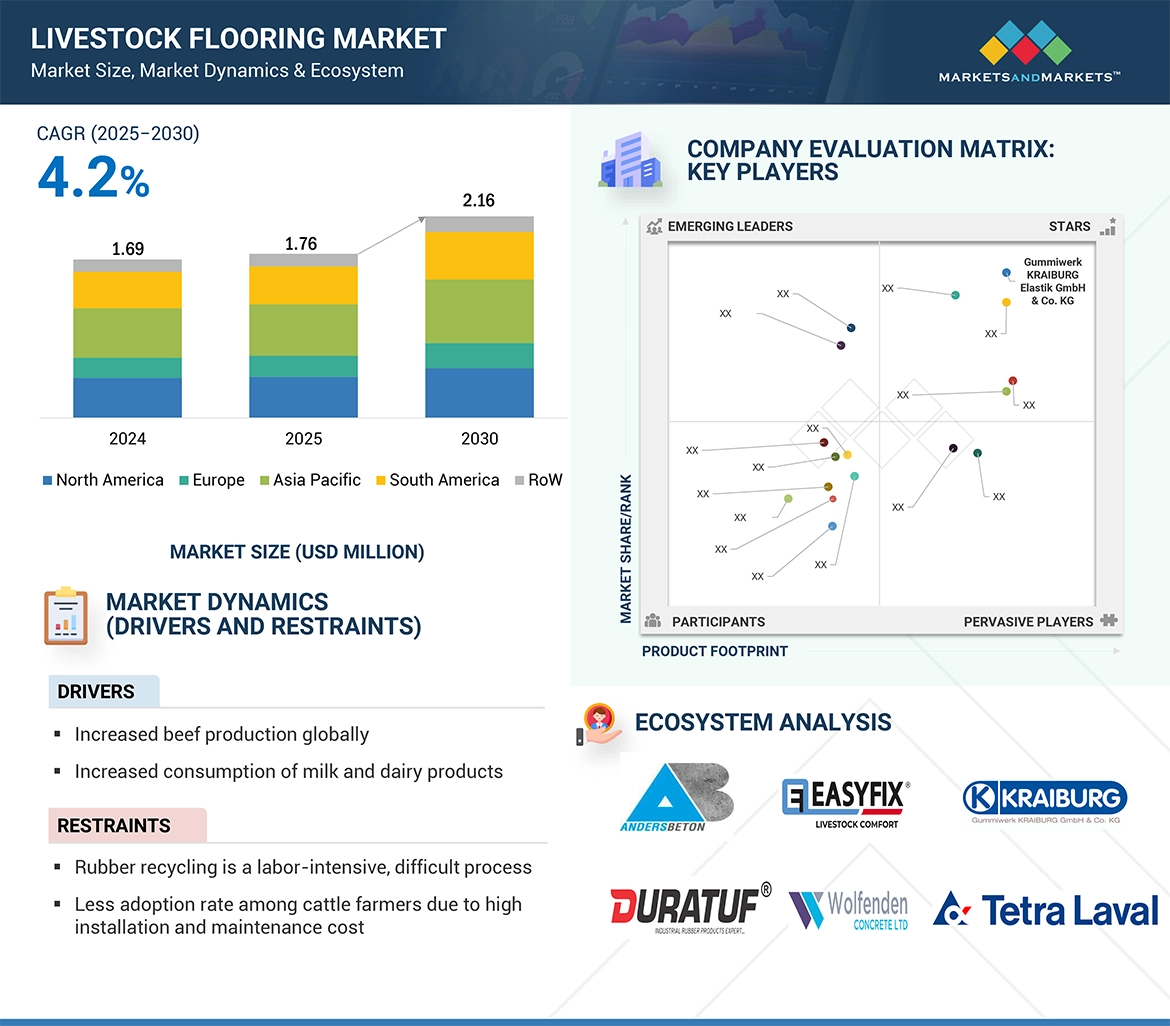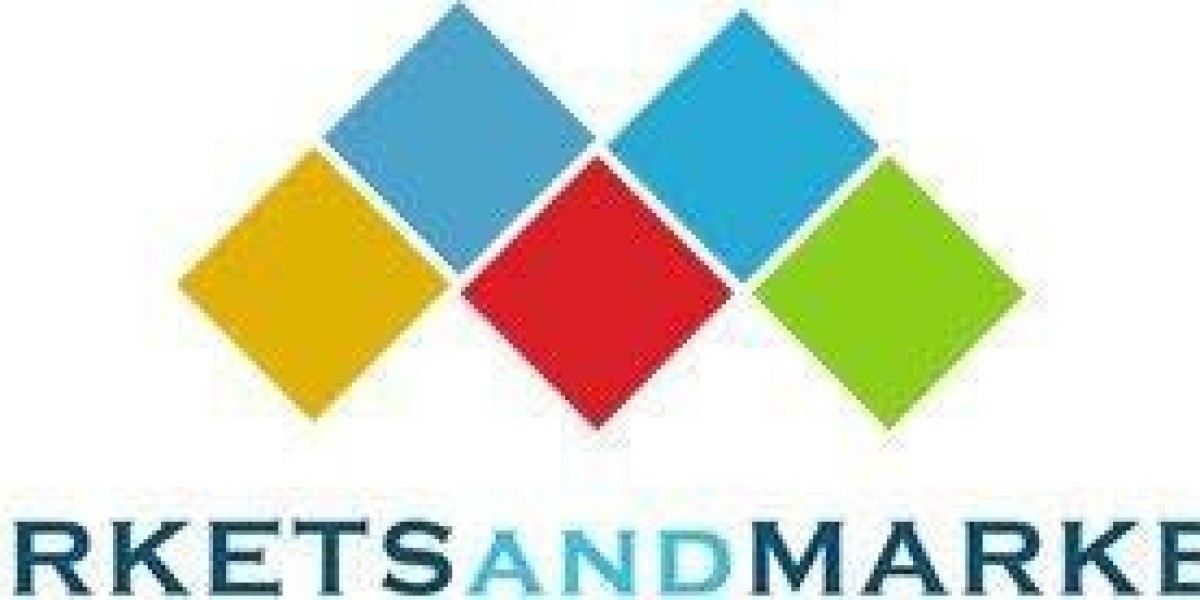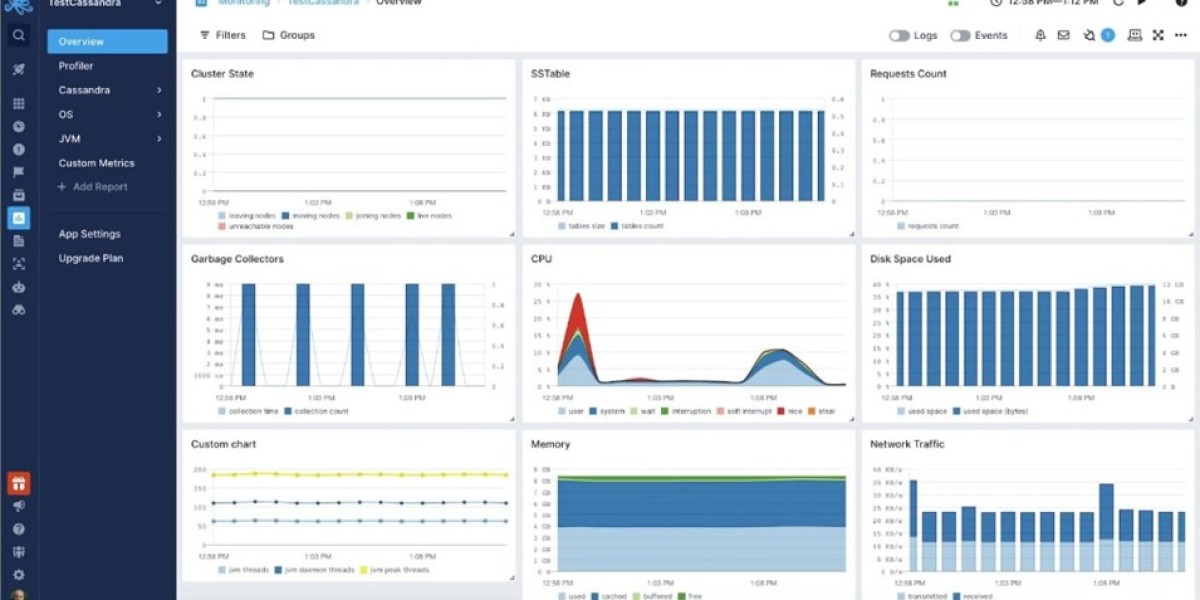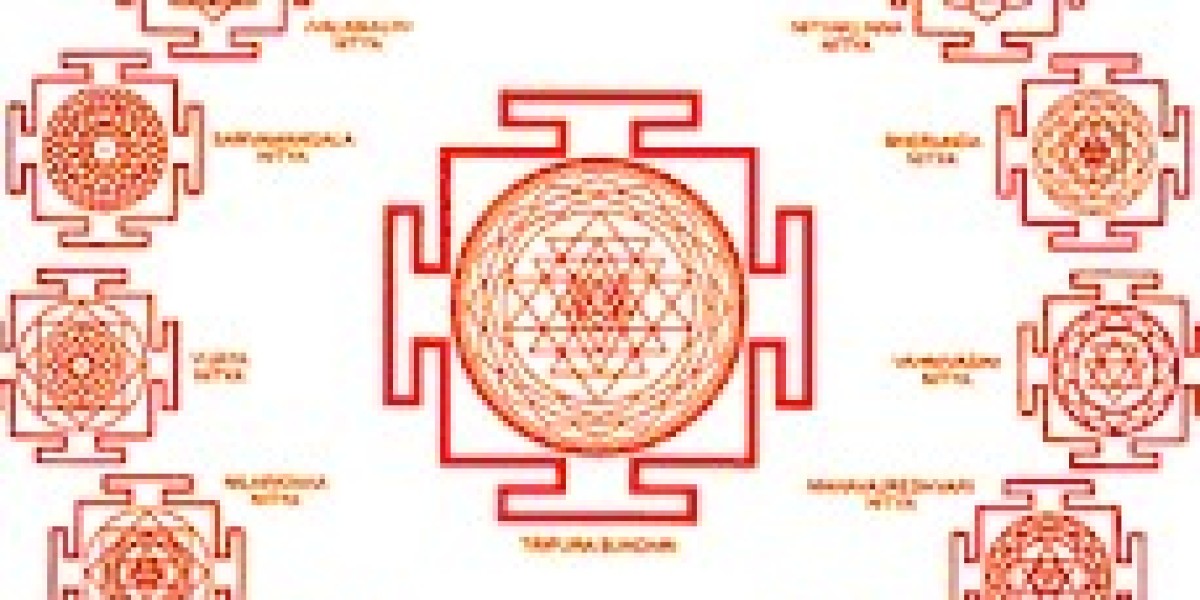The livestock flooring market size is estimated at USD 1.76 billion in 2025 and is projected to reach USD 2.16 billion by 2030, at a CAGR of 4.2% from 2025 to 2030. Livestock flooring is a specialized solution designed to offer a safe, hygienic and comfortable environment for animals within agricultural operations. This aspect becomes an important part of today's farming as it supports animal welfare, minimizes health risks, and increases productivity. There exist various materials, including concrete, rubber, plastic, and metal, in livestock flooring systems to meet the needs of different animals such as cattle, pigs, and poultry.

The global demand for meat, milk, and eggs has been driving steady growth in the livestock flooring market. Improvements in farming practices have increased the desire of animal farmers to invest in efficient, durable, easy-to-maintain flooring solutions to maximize their operations, while government measures encouraging hygiene and sustainable farming activities are also increasing market expansion. The integration of new technologies, like IoT-enabled flooring for real-time monitoring, is also changing the industry, so livestock flooring becomes a critical component of agricultural advancements across the globe.
Download PDF Brochure: https://www.marketsandmarkets.com/pdfdownloadNew.asp?id=103349855
The concrete segment is having the largest share within the material type sector of the livestock flooring market.
Concrete takes the largest market share based on material type as it is relatively strong, and cheap in the market and accessible everywhere. The robustness of concrete enables it to handle massive loads with time and the daily wear of massive animals like cows and pigs. Concrete is extensively used in dairy farms, swine housing, and feedlots, where firm, stable flooring for the animal will ensure its safety and productivity.
Low maintenance requirements and adaptability to different livestock housing establishments fuel the growth of concrete flooring. Moreover, its customization with grooves or non-slip coatings enhances the texture, giving improved grip, which helps prevent injuries in animals. Concrete can be associated well with automated cleaning systems that improve hygiene and biosecurity, factors that are crucially adopted in modern livestock farms. These benefits associated with the cost-effective nature of concrete are the reasons it becomes the dominant choice for large-scale livestock farming across the globe.
The panel series segment holds significant market share in the livestock flooring market.
Panel series products hold a significant market share in the livestock flooring market due to their durability, versatility, and animal comfort benefits. These products, primarily made of rubber, are designed to provide superior cushioning and support, reducing stress on animals' joints and improving overall welfare. Their slip-resistant and shock-absorbing properties make them ideal for housing cattle, pigs, and other livestock, ensuring safety and productivity.
Rubber panel flooring is favored for its ease of installation, low maintenance, and long lifespan, which contribute to cost savings for farmers. Additionally, its non-porous surface promotes better hygiene by minimizing bacterial growth and facilitating efficient cleaning. With growing awareness of animal welfare and demand for sustainable solutions, panel series rubber flooring continues to be in the market, offering reliable and eco-friendly options for modern farming operations.
Make an Inquiry: https://www.marketsandmarkets.com/Enquiry_Before_BuyingNew.asp?id=103349855
North America has a significant share in the livestock flooring market.
North America holds a significant share in the livestock flooring market, driven by the region's advanced agricultural infrastructure, high livestock production, and focus on animal welfare. The United States and Canada are key contributors, with strong demand for innovative and durable flooring solutions that enhance productivity and ensure animal comfort.
Prominent players like Animat (Canada) and J&D Manufacturing (US) lead the market with cutting-edge products, including rubber mats, designed to improve hygiene, reduce injuries, and support efficient waste management. The region's commitment to adopting modern farming practices and sustainability further drives the demand for high-quality flooring materials. Additionally, government support for agricultural advancements and the presence of well-established livestock farms reinforces North America's dominant position in the global livestock flooring market.
Top Livestock Flooring Companies:
The report profiles key players such as The Tetra Laval Group (Switzerland), Anders Concrete (Belgium), Wolfenden Concrete Limited (UK), Agri & Industrial Rubber Ltd. (Ireland), Gummiwerk KRAIBURG Elastik GmbH & Co. KG (Germany), Bioret Agri (France), Animat Inc (Canada), Nooyen group (Netherlands), Agri-Plastics (Canada), J&D Manufacturing (US), Agriprom (Netherlands), Legend Rubber Inc. (Canada), Kapoor Mats and Steel (India), Vikas Rubbers (India), and MIK INTERNATIONAL GmbH & Co. KG (Germany).









